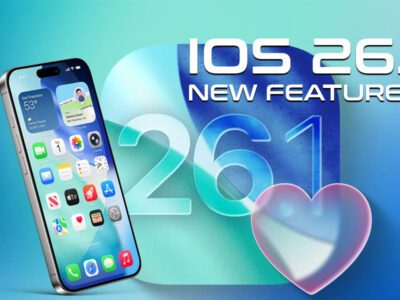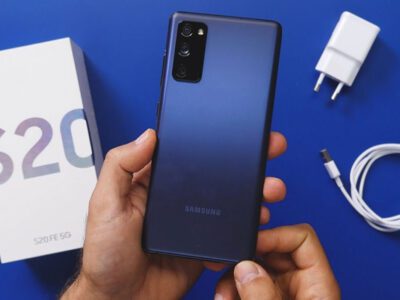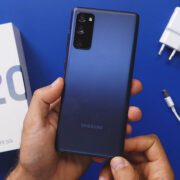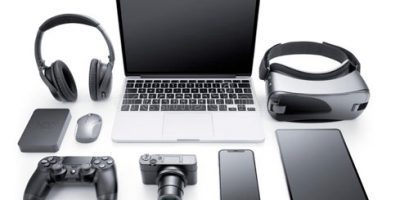Motorola Moto G 5G phone price, specs, screen, and battery review

The formula for a good $400 phone is difficult to solve, and Motorola hasn’t quite nailed it with the Moto G 5G.
You should expect some significant tradeoffs for $300 — performance may not be top-notch, but hey, you only paid $300. You’re spending a lot more money at $500, but you’ll find some worthwhile upgrades and even a few nice-to-haves. However, phones at $400 appear to offer the worst of both worlds: a no-frills experience at a significantly higher price than that $300 budget phone.
Let’s begin with the positives: the battery and overall performance. The Moto G 5G has a MediaTek Dimensity 700 processor and 6GB of RAM, which is impressive on paper and translates to good real-world performance. Apps load quickly and remain open in the background for an extended period of time. In general, the phone just keeps up as I switch between tasks and go about my business. This unlocked variant comes with 256GB of storage, which can be expanded with a microSD card slot.
The 5,000mAh battery in the Moto G 5G is about as big as they come, and it lives up to Motorola’s claim that it can last up to two days on a single charge. I’m down to 56 percent after a day of moderate use that included four hours of screen-on time, some video streaming, a Zoom call, and a lot of social media scrolling — all with the screen’s highest refresh rate enabled. It has some of the best battery life of any phone released this year.
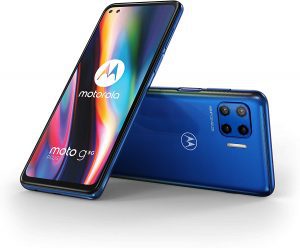
Motorola’s software is also deserving of a mention. It’s a light-handed approach to Android 12 that’s genuinely user-friendly. It has some clever features that I look forward to using when I test a Motorola phone, such as the sunrise alarm option in the bedtime mode settings and the lock screen peek notifications that are minimally disruptive. One OS platform upgrade and three years of security updates are promised for the Moto G 5G. That’s fine for a budget phone, but for a little more money, the iPhone SE or Samsung A53 5G will last much longer.
Of course, 5G is supported here as well, albeit at sub-6GHz rather than the much faster but scarce mmWave, which isn’t much of a loss in any case. The unlocked version of the phone will be available at launch on T-Mobile and Verizon’s sub-6GHz 5G networks; Motorola spokesperson Stephanie Stiltz tells us that other carriers “will be available in the coming months.”
 However, nice software, a great battery, and even fast performance aren’t everything. The screen on the Moto G 5G isn’t particularly impressive, with a paltry 720p resolution for its sizable 6.5-inch display. Details simply do not look as good on this screen as they do on a higher-resolution display. It’s also an LCD, which doesn’t provide the same rich viewing experience as an OLED panel, though its 90Hz refresh rate helps to smooth out motion.
However, nice software, a great battery, and even fast performance aren’t everything. The screen on the Moto G 5G isn’t particularly impressive, with a paltry 720p resolution for its sizable 6.5-inch display. Details simply do not look as good on this screen as they do on a higher-resolution display. It’s also an LCD, which doesn’t provide the same rich viewing experience as an OLED panel, though its 90Hz refresh rate helps to smooth out motion.
The biggest issue I had with the display was using it to type messages, which we all do about a million times a day. When I use the default Gboard keyboard, it registers a lot of errant double taps, so often that I have to backspace to remove extra letters and unwanted periods multiple times during the course of composing a single text.
I tried turning off the haptic typing vibrations in case they were interfering, but nothing changed. Using another keyboard app is also ineffective. It’s an extremely frustrating experience that forces me to type and retype logins, texts, and searches numerous times per day, and it’s not something I’d be able to live with for long before throwing my phone into the sea out of frustration.
The phone then simply stopped receiving text messages on a couple of other occasions, with no indication of a problem. I was using Wi-Fi at home and only noticed because I kept requesting a two-factor authentication code that never arrived. Turning off and on the wireless network fixed the problem, but not before I’d missed a few texts and a slew of authentication codes.
The Moto G 5G’s camera performance is neither a plus nor a minus on its report card. The main rear camera has a 50-megapixel sensor that combines pixels to produce images with a resolution of 12-megapixels. On the back, there’s also a 2-megapixel macro camera and a depth sensor, neither of which is particularly useful. A 16-megapixel camera is located on the front of the device. The selfie face-smoothing beauty filter is enabled by default, but you can easily tone it down or turn it off entirely.
Photos taken in bright outdoor lighting are nice, and Motorola doesn’t overdo the HDR effects. Dim lighting is an issue, as it is with most budget phones. It will be difficult to get a sharp shot if your subject is moving and the light is low. There’s a night mode for low-light situations, as well as 1080p video recording. It’s a basic imaging feature set that isn’t the best for the money, but it’s also not the worst.
Views: 113


